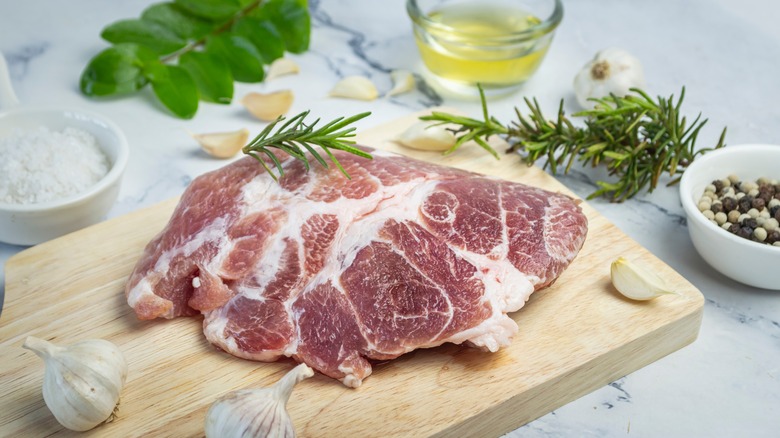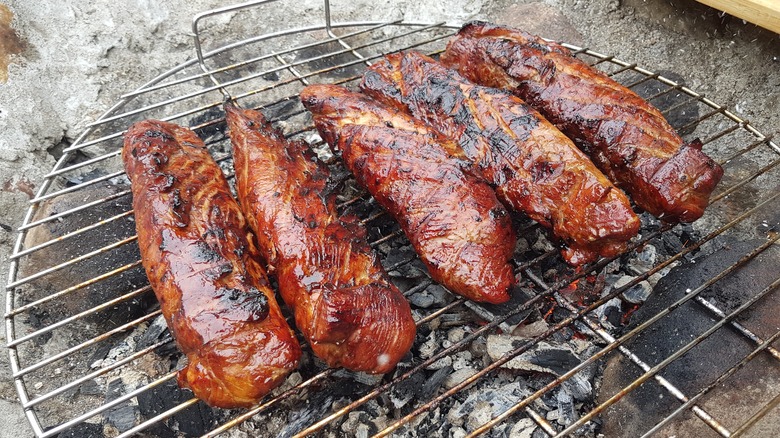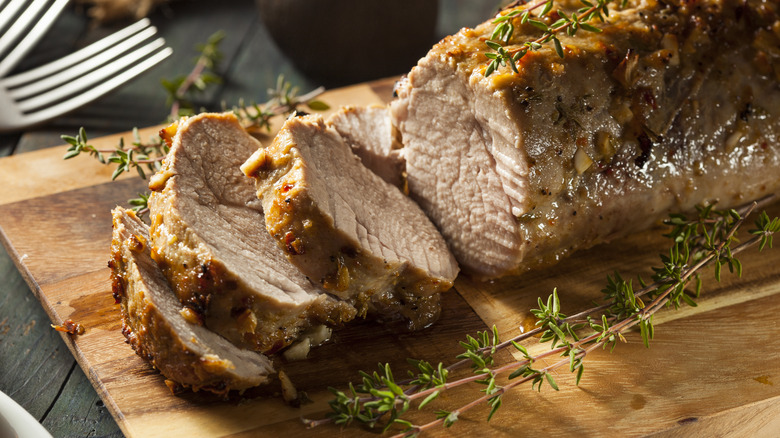The Simple Step That Makes Grilled Pork Tenderloin Erupt With Juicy Flavor
For most parts of the country, grilling season is fleeting, so it's important to make every burger and brat count. There's no time for disappointing results as the days get shorter, and nobody likes dry pork and overcooked chicken breast. Thankfully there's a simple step you can use to make sure meats like pork tenderloin always come out perfectly juicy and tender: Sprinkle some coarse salt all around the outside of the meat about an hour before you plan to grill.
Coating pork tenderloin with salt and then letting it rest for at least 45 minutes is a process known as "dry brining," and it's the secret to getting super juicy results when you're cooking delicate cuts. Ina Garten uses this method to make the perfect roast chicken, and it works just as well for grilling pork. Just make sure to give the pork enough time for the salt to work its magic and grill the meat over high heat to get a hard sear that seals in the juices.
How dry brining works
If you've never done any brining, the process is very simple. Basically you submerge food in a salty solution and let it sit for a period of time so the food absorbs the liquid. The salt traps moisture inside the cells of the meat, which is how you get a juicy brined and roasted Thanksgiving turkey, for example. Dry brining does the same thing, only you coat the outside of the meat all over with salt, which draws out the moisture. If you let it sit there for a while, the liquid from the meat will create a thin coating, which is the same as a brine. After about 45 minutes or so, the meat will reabsorb the liquid, and just like a wet brine, the salt will trap the moisture inside.
In the case of pork tenderloin, you don't need a long period of time to get the effects of dry brining. An average tenderloin that you can buy at a grocery store will weigh around 1 pound (sometimes a little smaller, sometimes a little larger) and will only be a couple of inches thick. Coat the entire outside of the tenderloin with some type of coarse salt — like Kosher or sea salt — and let it sit for at least 45 minutes to an hour.
Grill the tenderloin over high heat and let it rest
If you have more time to prep your pork tenderloin, let it sit for a couple of hours for more brining, and leave the meat uncovered to let the surface dry out. The drier the surface, the easier it will be to get the meat to brown on the grill because food must be dry to achieve the maillard reaction. When the pork is sufficiently brined and ready to cook, grill it directly over high heat so you get a dark, hard sear. This will seal in the moisture to keep your pork as juicy as possible. Cook the meat from start to finish over the high heat, and make sure to pull it off the grill at around 140 degrees Fahrenheit so it doesn't overcook and get too dry. The USDA recommends cooking pork to 145 degrees, but carryover heat will finish the cooking while the meat is resting.
Finally, always rest your meat for a few minutes before you serve it. If you cut it too soon, the juice will run out all over the cutting board. Let it sit for five to 10 minutes so the muscle fibers can cool and reabsorb the juice — then slice it and serve. Once you see how easy it is to get great tasting grilled pork tenderloin with a little dry brining, you'll kick yourself for not trying it sooner.


